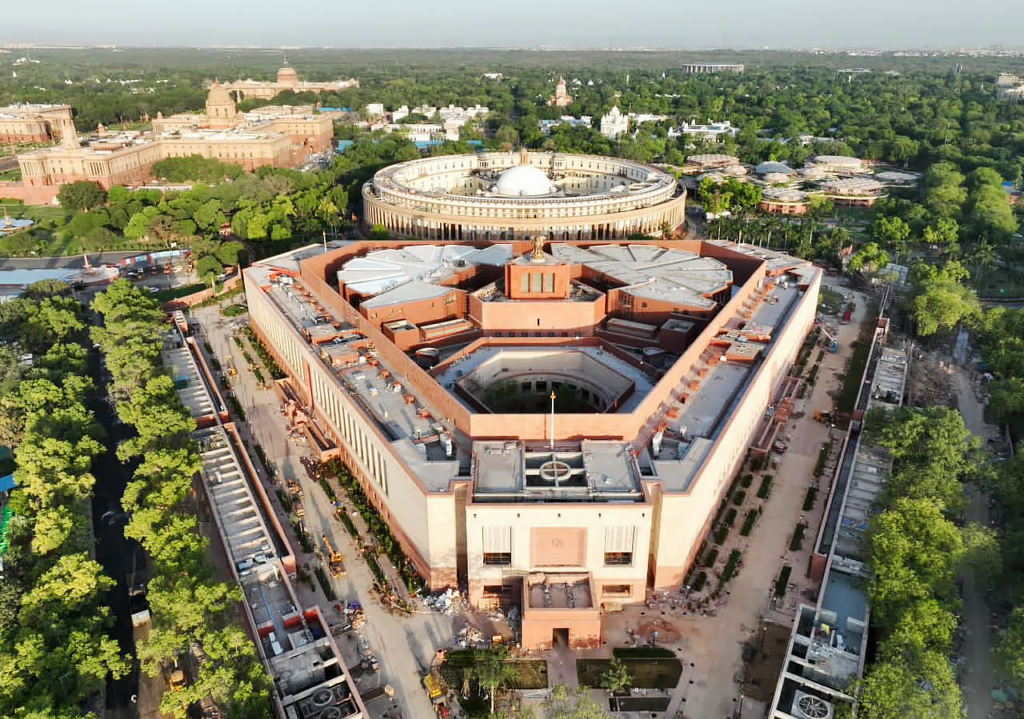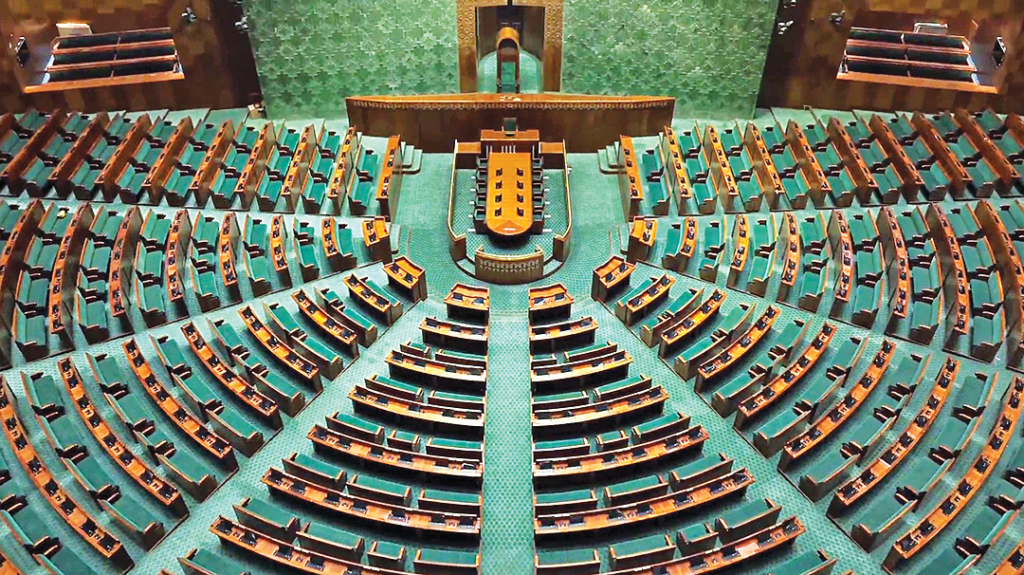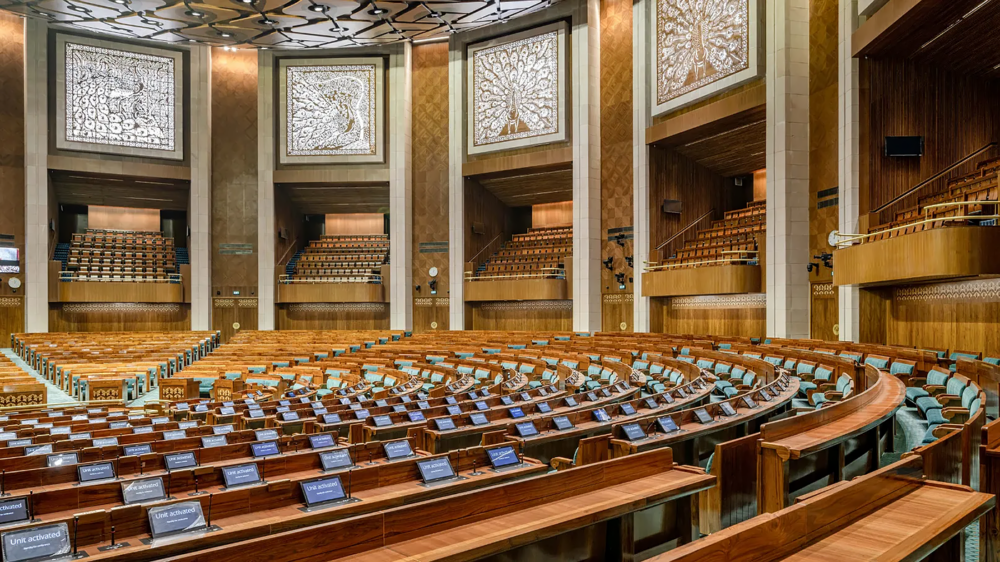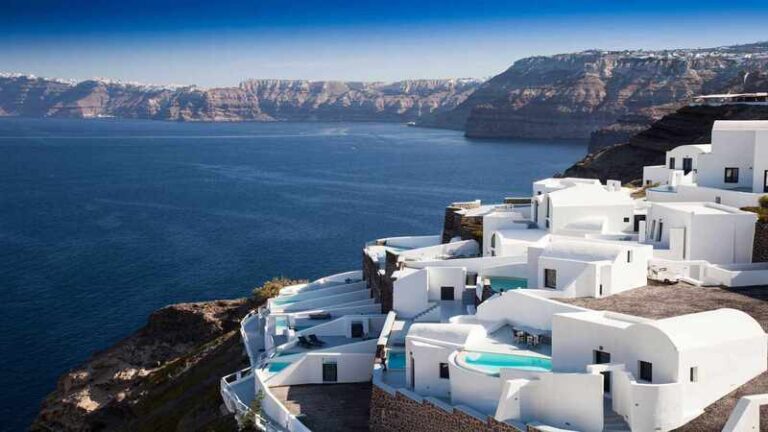Prime Minister Narendra Modi inaugurated the New Parliament Building on May 28, 2023 at 7 am. The celebrations began with several religious pujas. After this, Prime Minister Modi went to the new Parliament House and installed the Historical Scepter – Sengol near the chair of the Speaker of the Lok Sabha.
The new Parliament House of India is ready. On May 28, Prime Minister Narendra Modi (PM Modi) is going to inaugurate the new Parliament. The New Parliament Building of India has been in discussion for a long time due to different reasons. The New Parliament Building of India is an example of magnificent architecture and structure. It is part of the ambitious Central Vista project of the Government of India.

The current Parliament building of India houses the proceedings of both Rajya Sabha and Lok Sabha since 1927 and took six years to complete. While the Old Parliament Building is a symbol of the potential of the Indian democratic system, the New Parliament Building will reflect the aspiration of a new and independent India. Built over an area of 65,000 square meters, this magnificent building will be a symbol of architectural marvel in India.
The New Parliament Building is part of the Central Vista project of the Central Government. The Central Vista Master Plan was conceptualized in September 2019. The Central Vista Vikas or Redevelopment Plan is a six-year infrastructure development project consisting of several initiatives.
The Central Vista Developmental Project was conceptualized well designed with good infrastructure, nodes, axis, focal points and terminations.

Purpose of construction of new parliament house
The purpose of the construction of the new Parliament House is as follows-
Showing the original layout of Central Vista
Improving the functions and efficiency of the government
strengthen the functioning of the legislature
Conservation of heritage and cultural facilities
Providing secure facilities to executive offices
Ensuring Environmental Sustainability and Expanding Central Vista
Providing secure facilities to the Vice President and the Prime Minister
To promote transit-oriented development.
New Parliament Building – some special things
Features of New Parliament House
Total built up area
20,886 M2
Total seating capacity
1272
Seating Capacity for Members of Lok Sabha
888
Seating Capacity for Members of Rajya Sabha
384
Total Floor
4
Architect
Bimal Patel
Architect Firm
HCP Design Planning & Management Pvt Ltd
Contractor
Tata Projects
Inauguration
28 May 2023
Address
Plot No. 8, Sansad Marg, New Delhi
Website
www.centralvista.gov.in
New Parliament Building – Features
The Parliament House was old and the infrastructure was inadequate, due to which, a committee was constituted to suggest an alternative. Since the current building is more than 93 years old, new security measures and infrastructure cannot be put in place.
To address the infrastructural challenges, the Government of India launched the Central Vista Project and began the construction of the new Parliament House. The Central Vista program also included the construction of a new house for the Vice President of India, the renovation of Duty Path, a new house and office for the Prime Minister.
The Bhumi Pujan ceremony of the New Parliament Building was held in October 2020. The foundation stone was laid in December 2020.
Bimal Patel is the architect of the Central Vista Development Project. He has decades of experience and is an accomplished architect. The shape of the New Parliament Building is triangular, and it is built near the existing Parliament House.
The new Parliament House will be able to be used for about 150 years. It is earthquake resistant and architectural designs from all over India will be used in the new parliament. It will showcase the culture and sculpture of popular architectural styles prevalent in India. As the number of Members of Parliament will increase in the years to come, the new building will have seating capacity for Rajya Sabha and Lok Sabha. The number of MPs is expected to increase after the cap on delimitation is lifted in 2026.
The capacity of the new Parliament House will be 888 for the Lok Sabha and 384 for the Rajya Sabha. In the event of a joint session in the new Parliament House, 1272 members of the Lok Sabha will be able to sit. Other parts of the new parliament building will have four floors with offices for ministers and committees.
Interesting facts about New Parliament Building
Here are some interesting facts about the new Parliament House:
The shape of the new Parliament House is triangular so that the entire space can be utilized.
Despite the new building, work will be done in both the old and the new Parliament House. With this, smooth functioning of legislative works will be possible.
The new Lok Sabha building is three times bigger than the present building. The new building is based on the national bird ‘Peacock Theme’.
The new Rajya Sabha building is based on the ‘Lotus Theme’ i.e. the national flower.
A state-of-the-art Constitutional Hall with modern facilities has been built in the new Parliament House.
The offices inside the new Parliament House are beautifully designed and will be equipped with the latest communication technology.
The office space and the new building will be equipped with the latest audio-visual systems.
This will generate employment opportunities for skilled, semi-skilled and unskilled workforce.
The library of the new Parliament House will be a world-class and state-of-the-art library in which members will be able to find information of their choice.
The New Parliament Building will be an environment-friendly and platinum-rated green building that reflects India’s commitment to a sustainable future.
Keeping in mind the mobility concerns of Divyangjan, the New Parliament Building will be fully Divyang friendly.
During construction, about 24,04,095 man-days of employment was generated.
A total of 26,045 metric tonnes of steel was used in the construction of the new Parliament building.
63,807 metric tonnes of cement and 9689 cubic meters of fly ash were used in the new parliament building.
Why was the new Parliament House built?
The present Parliament House is the erstwhile ‘House of Council’, and was constructed in 1927. The present strength of the Members of Parliament after various constitutional amendments is 552. However, in view of the need for greater representation in the years to come, more space will be required. In addition, the demand for more representation by the members of the Parliament will also increase due to the increasing population.
In addition, there is a lot of space in the present Parliament Building. There is a need for a Parliament building with state-of-the-art facilities. Also, a study has revealed that the existing building is in need of repair. The New Parliament Building will be a strong, long-lasting and earthquake-resistant building for the smooth functioning of the legislative structure of India.
The need for a new Parliament House can be understood from the following points:
Seating Arrangement of Members: The present seating arrangement in the Parliament House is based on the representation prepared on the basis of 1971 census. When the cap on delimitation is lifted in 2026, the number of MPs will increase significantly. At present the capacity of the Central Hall is 440 persons. When both the sessions are held simultaneously, the problem of space gets aggravated.
Unplanned Infrastructure: Since there was no provision for installation of CCTV cameras, audio and video systems, water pipelines and other necessary things in the present Parliament House, doing so affected the beauty of the building. Apart from this, it has also created the problem of leakage.
Inadequate communication infrastructure: In the present Parliament House, the communication system has become inadequate and needs major changes. The acoustic system needs to be upgraded.
Earthquake hazard: The present Parliament House was built when the national capital was in seismic zone 2. Presently, New Delhi falls in seismic zone 4.
New Parliament Building – Design and Architecture
The New Parliament Building is a symbol of the aspirations of more than 130 crore people of India. The New Parliament Building will be a symbol of India’s architectural prowess and will enable parliamentary work and legislative processes to run smoothly for many decades to come.
Connect with us
https://www.youtube.com/themonktravel
































